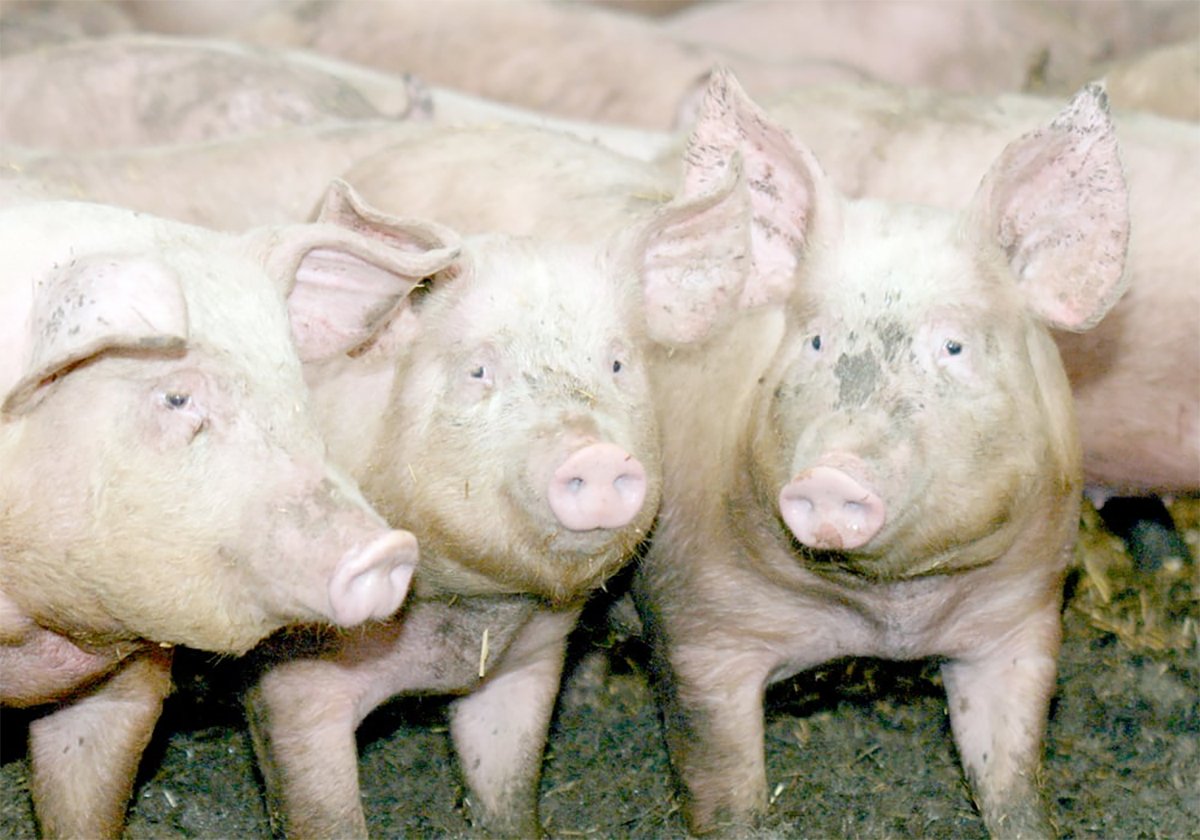Feed efficient | Breed regaining market share
If there is such a thing as high fashion in the livestock trade, then white is the new black in Canada’s cattle industry.
Albert Rimke, a Hereford breeder from Oak Lake, Man, said cattle producers are asking for animals with white faces.
“Personally, I think a lot of the cattle buyers are wanting to see the white face on the cross-breds because they know the (cattle) have the feed efficiency… and the docility,” Rimke said inside the Hereford barn at the Manitoba Livestock Expo, held in Brandon Oct. 31 to Nov. 2.
Read Also

The Western Producer Livestock Report – November 13, 2025
Western Producer Livestock Report for November 13, 2025. See U.S. & Canadian hog prices, Canadian bison & lamb market data and sales insights.
As kids, dads and moms trimmed cattle hair, led heifers to shower stalls and forked manure to garbage cans, there was a buzz in the Hereford barn at the expo, possibly because interest in the breed is surging.
“There is definitely an increase. On the bull side, in the last couple of years we’ve pretty much doubled our sales,” said Brent Blaine, Manitoba Hereford Association president, who farms near Brandon. “More people coming into the Hereford barn: stopping, chatting and asking questions.”
Blaine agreed that white faces are a hot commodity right now.
“A lot of the commercial guys are wanting to bring in some the British influence … bring some of the white faces into their animals. It’s definitely made a (significant) improvement as far as sales.”
Andrew Kopeechuk, the association vice-president who farms near Brandon, is also seeing more de-mand for his purebred Herefords.
“We just had our own internet-based sale and it did really well,” he said. “With us, we’re moving more animals to western Ontario, into that cattle country around the Rainy River area.”
There was a time, about a generation ago, when Hereford breeders didn’t worry much about the status of the breed. Back then the Hereford breed ruled the Canadian cattle industry, said Doug Troop, a cattle producer in the Brandon area.
Eventually, other breeds pushed Herefords off the mountaintop.
“Thirty years ago we had more Hereford cattle registered than all the other breeds together,” said Troop, a Manitoba Hereford Association director. “I think we got complacent. Bulls were kept that shouldn’t have been kept.”
To regain lost market share, Hereford breeders and associations have trumpeted the desirable traits of Hereford cattle — particularly feed efficiency.
As corn, barley and wheat prices rose in recent years, so has interest in Hereford genetics.
“We’re seeing more Angus herds looking for Hereford bulls to make their own Black Baldy cross,” Troop said, over the whirr of fans at the livestock show, keeping bulls and heifers cool. “The Black Baldy cross has always been a mainstay of the commercial industry.”
To capitalize on the breed’s reputation for feed efficiency, last year the Canadian Hereford Association initiated a study at Olds College in Alberta to identify efficiency traits.
“We eventually hope to develop an EPD (expected progeny differences) for feed efficiency for our breed,” Gordon Stephenson, Hereford association manager, said last year.
The genetic information should help breeders select animals that are more efficient at converting feed.
While Hereford breeders wait on that data, white faces may endure as a trendy look within the cattle business, unless corn prices fall to $3 per bu.















